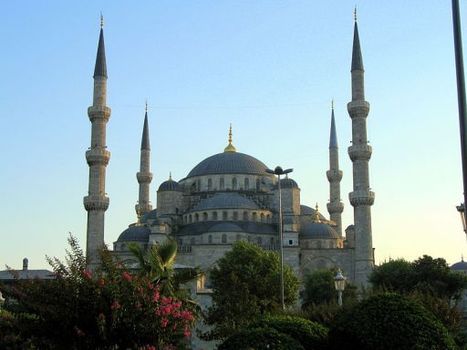Islamic traditions seem to be the underlying style in the building of the Taj Mahal. There are inscriptions from the Koran cover much of both the exterior and interior walls by craftsmen from as far away as China and Italy (textbook, 194). Pointed archways is characteristic of Islamic architecture and it is present in the building of the Taj Mahal. The beautiful inlay of floral patterns is also a characteristic of Islamic architecture. See Below:
This is the Mosque of Sultan Ahmed at Istanbul, Turkey. It bears a resemblance to the Taj Mahal and was built from 1610-1616. The Taj Mahal was built in 1630-1653.
This is the Sultan Hussan Mosque in Cairo, Egypt. It has similar inlay style patterns on the interior walls as well as the pointed arch--both characteristics







Stephannie,
ReplyDeleteThe influence of Islam throughout the world is staggering. I had always assumed that the Taj Mahal was strictly a work of Indian culture. It made me think of the Cathedral of Cordoba in Spain, which was originally a mosque but was converted into a Catholic church. From Asia to the end of the Mediterranean, Islamic culture has influenced a vast array of people, their culture, and their values. Also, it is amazing that artisans from Italy and China were used to help construct the Taj Mahal. This shows how advanced and cosmopolitan India was, at a time when its neighbors were not.